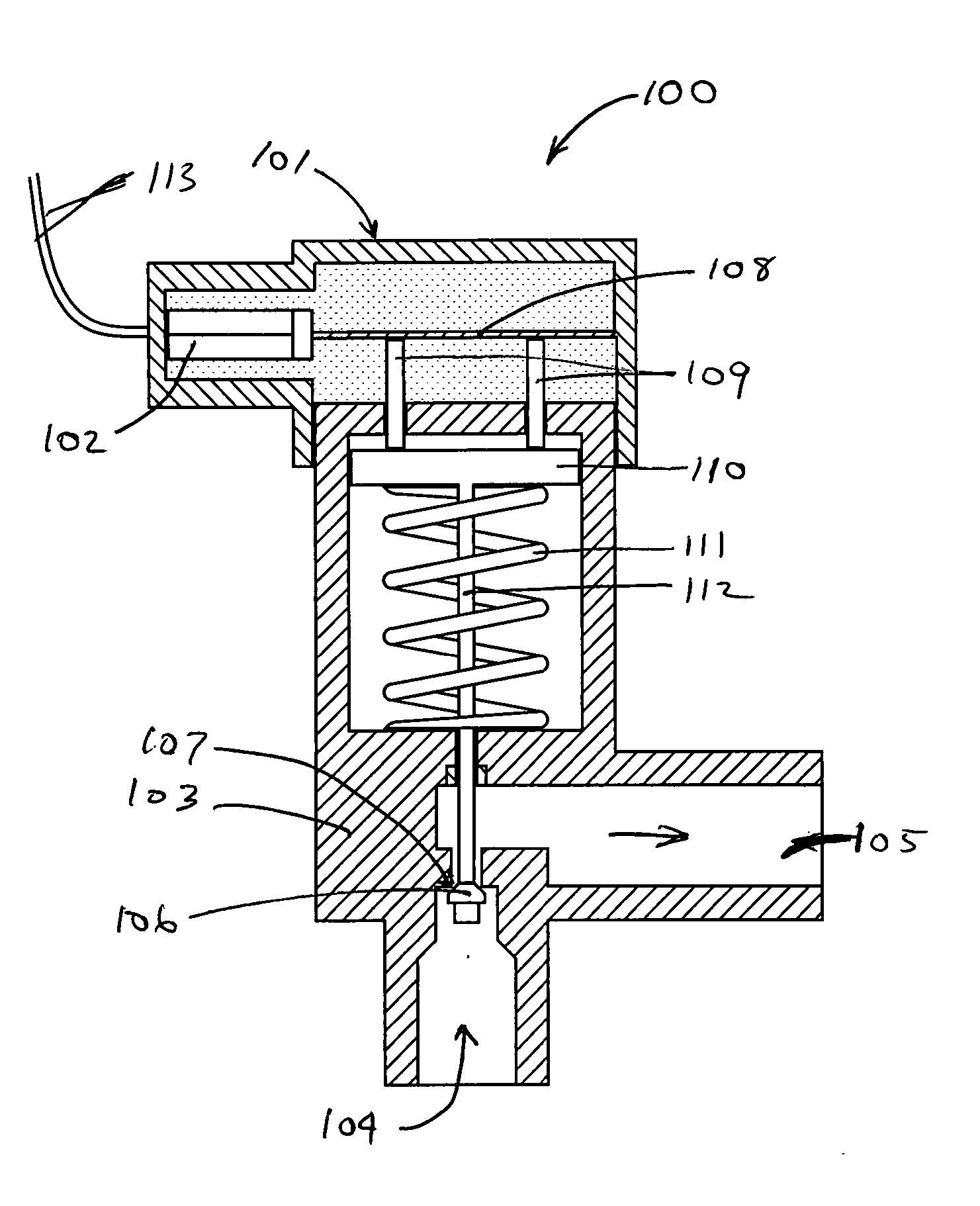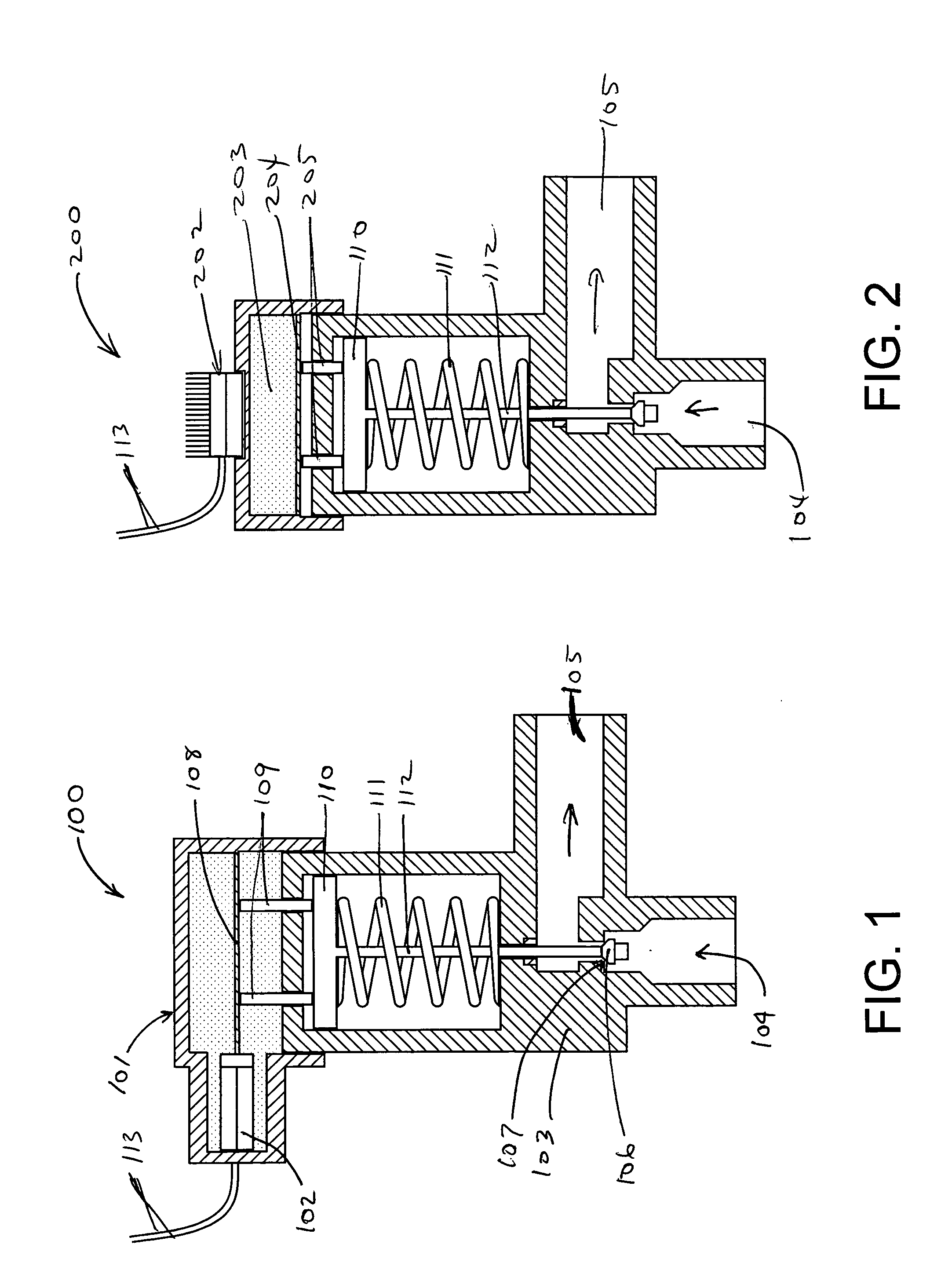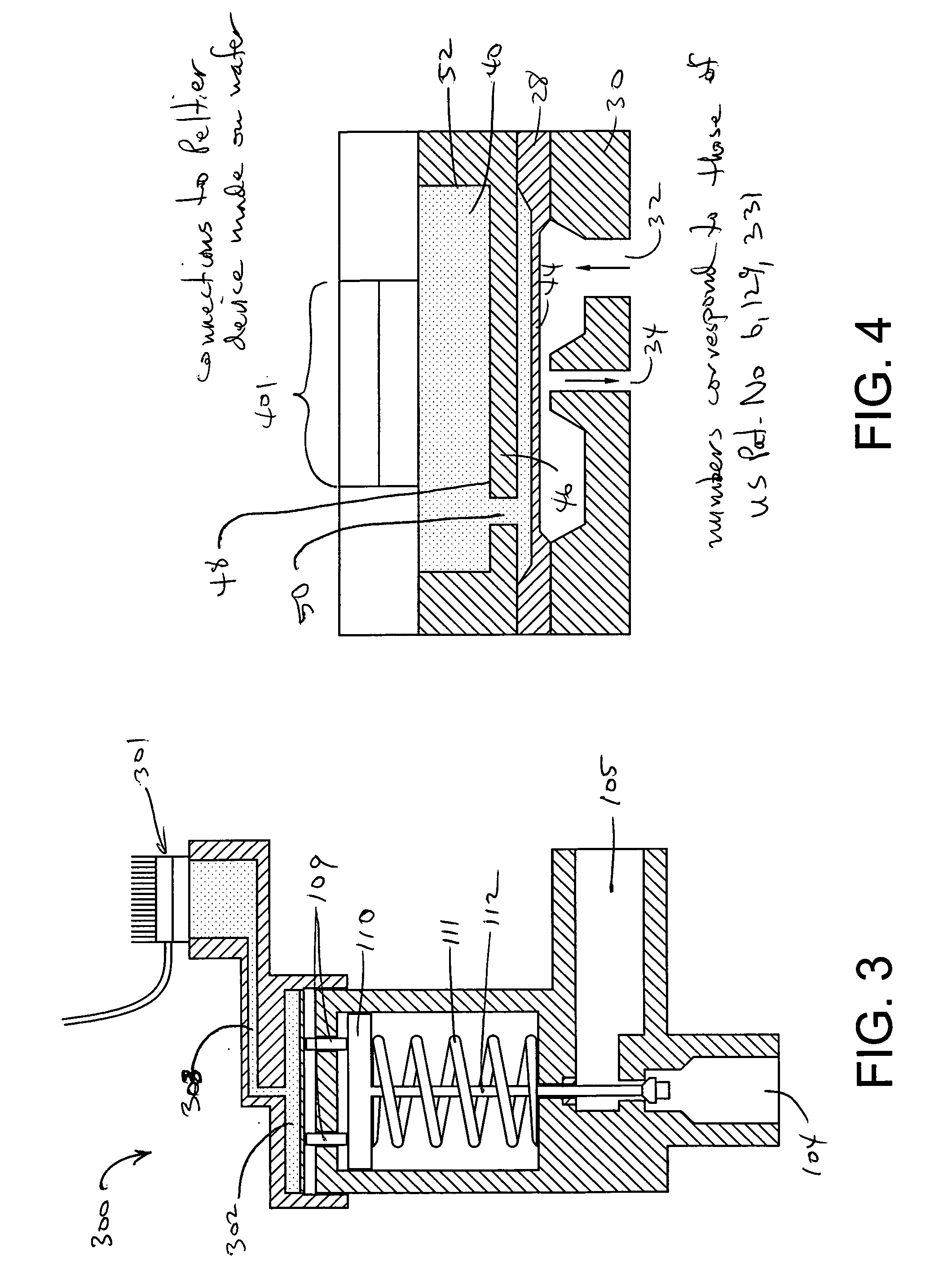Valves having a thermostatic actuator controlled by a peltier device
a thermostatic actuator and thermostatic actuator technology, applied in the field of valves, can solve the problems of high initial heat load of compressors controlled by txvs, high price of current exvs, and inability to meet the needs of customers, so as to reduce the reaction time in response to received inputs
- Summary
- Abstract
- Description
- Claims
- Application Information
AI Technical Summary
Benefits of technology
Problems solved by technology
Method used
Image
Examples
first embodiment
[0020] Referring now to FIG. 1, a first embodiment expansion valve 100, having a thermostatic actuator 101 controlled by both sides of a Peltier module 102, is shown. The valve 100 has a valve body 103 with an inlet 104, and an outlet 105. The passageway 106 between the inlet 104 and the outlet 105 is controlled by a conical valve plunger 106. The conical valve plunger 106 is normally pressed against the valve seat 107, but is pushed away from the seat by the expansion and contraction of gases brought about by current passing through the Peltier module 102. Gas on the top of the diaphragm 108 is exposed to the heat-source side of the Peltier module 102, while gas below the diaphragm 108 is exposed to the heat-sink side of the Peltier module 102. When current passes throught the Peltier module 102, the diaphragm 108 presses against the actuator pins 109, which in turn press on the actuator disk 110, thereby overcoming the force exerted by the coil spring 111 and depressing the vertic...
second embodiment
[0021] Referring now to FIG. 2, a second embodiment expansion valve 200 having a thermostatic actuator 201 controlled by both sides of a Peltier module 202, is shown. The lower portion of the expansion valve is identical to that of FIG. 1. However, it will be noted that there is a gas reservoir 203 only on top of the diaphragm 204. When the Peltier module 202 heats gas within the gas reservoir 203, the diaphragm 204 presses against the actuator pins 205, which in turn press on the actuator disk 110, thereby overcoming the force exerted by the coil spring 111 and depressing the vertical connector rod 112 that is directly coupled to the valve plunger 106.
third embodiment
[0022] Referring now to FIG. 3, a third embodiment expansion valve 300 has an external Peltier module 301 with an embedded thermostatic expansion bulb 302 connected to the valve by means of a capillary tube 303. Such a configuration is useful when the heat loss through the valve is greater than the heat that a Peltier module directly coupled to the valve could generate. By isolating the Peltier module 301 from the valve, the valve may be operated using reduced power requirements.
[0023] Referring now to FIG. 4, the valve of U.S. Pat. No. 6,129,331 has been modified in accordance with the present invention to have a Peltier device 401 in place of a thermal isolating heater. U.S. Pat. No. 6,129,331 is hereby incorporated by reference into the present document.
[0024]FIG. 5 is a diagramatic view of a closed-loop refrigeration control system 500. The system 500 includes a mirco-controller 502 having set point inputs 501, an electronically-contolled thermal expansion valve 503 incorporati...
PUM
 Login to View More
Login to View More Abstract
Description
Claims
Application Information
 Login to View More
Login to View More - R&D
- Intellectual Property
- Life Sciences
- Materials
- Tech Scout
- Unparalleled Data Quality
- Higher Quality Content
- 60% Fewer Hallucinations
Browse by: Latest US Patents, China's latest patents, Technical Efficacy Thesaurus, Application Domain, Technology Topic, Popular Technical Reports.
© 2025 PatSnap. All rights reserved.Legal|Privacy policy|Modern Slavery Act Transparency Statement|Sitemap|About US| Contact US: help@patsnap.com



